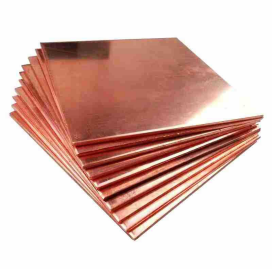Sheet Metal Materials
Compare sheet metal materials to find the ideal solution for your project. From steel and aluminum to specialty alloys, our guide highlights key properties like strength, durability, and flexibility, helping you choose the right material for prototypes, production parts, or custom designs.
The core advantage of copper materials lies in their exceptional electrical and thermal conductivity, combined with excellent corrosion resistance, malleability, and ductility. This allows copper to be easily fabricated into a wide range of complex shapes, making it highly valuable across multiple industries.
C101 (commonly known as oxygen-free electronic copper) contains virtually no oxygen impurities, offering top-tier purity and conductivity. It is the preferred material for applications with extremely high requirements for material purity and electrical efficiency. However, its cost is higher than C110, making it more suitable for scenarios where peak conductivity is critical and cost is not the primary concern, such as high-precision electronic components and key conductive parts.
C110, an oxygen-containing derivative of C101, contains only trace amounts of oxygen. While its purity, conductivity, and corrosion resistance are slightly lower than C101, it still meets the core requirements of most industrial applications. With lower cost and excellent formability, C110 is commonly used in heat exchangers, industrial wiring, and piping systems.


